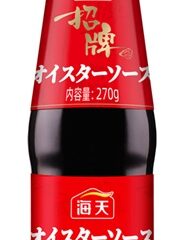
“食”の業務用展示会「FABEX東京2025」出展報告
そこで、本日は展示会で反響の大きかった「知られざる中華食材の世界」をご紹介します!
さつまいも麺
ヘルシーなのにこの満足感!もっちもち新食感麺

さつまいも麺とは、さつまいものデンプンを原料とした春雨麺です。日本ではあまりなじみがない麺ですが、中国では湖南省や四川省など各地で古くから親しまれていて、麻辣湯(マーラータン)や酸辣湯(サンラータン)、火鍋などのスパイシーな料理には欠かせない存在なのだそうです。
FABEXのハイケムブースでは、虎ノ門ヒルズ「蘭苑」の料理長が監修した「ちゃんぽん風さつまいも麺」の試食を実施し、1,700人以上の来場者の方にご試食いただきました!
ご試食いただいたお客様からは「日本で一般的に流通している緑豆春雨と比べて、もちもちしていて食べごたえがある」などの感想をいただきました。
さつまいもで作られているため、食物繊維やビタミンCなどが豊富な点もうれしいポイントです。

オーツ麺
食物繊維たっぷり!ヘルシー志向の次世代ヌードル

FABEXで2番目に注目を集めた麺が「オーツ麺」でした。こちらも日本ではあまり流通していませんが、中国では全土で400店舗を展開するオーツ麺専門の大手外食チェーンがあり、この店舗を通じてなじみ深い食材となっているそうです。
オーツ麦を原料として使用しているため、高食物繊維で低GIといった点がダイエットなどを意識する方にもうれしい食材です。展示会では、オーツ麦に黒麦をブレンドした乾麺を展示しました。あっさりとして軽やかな口当たりで蕎麦に似た食感を味わえます。
中国産オートミール
オートミールの食事化が進む日本では浸透しやすいかも!?

近年、日本でも健康食材として市民権を得た感のある「オートミール」ですが、実は中国産のオートミールはほとんど日本では流通していないのだそうです。中国で流通しているオートミールは裸燕麦と言われる品種で、他のオートミールよりも食物繊維やタンパク質が多く含まれます。
また、食品開発プロジェクトの担当者によると「中国ではオートミールをお粥として食べる習慣が多いため、オートミールをお米みたいにして食べようと試みる日本の食文化にはあっているのでは。」とのことでした。
 ブースでは、中国産のオートミールやオーツ粉などを展示
ブースでは、中国産のオートミールやオーツ粉などを展示
鶏胸肉でんぶ
ふわっとほぐれるうま味の塊!料理にカリカリ食感をプラス

「でんぶ」と言われて私たち日本人が思いつくのは、ひな祭りの時にちらし寿司にのっている「桜でんぶ」でしょうか。桜でんぶは、鯛などの白身魚を原料としてピンク色に色付けしたものです。一方、中国の福建省や台湾などでは、鶏胸肉で作られたでんぶが広く普及しているのだそうです。砂糖醤油ベースの甘じょっぱい味つけが基本で、総菜やパン、スイーツなど幅広い分野で使用されています。
食材は鶏の胸肉だけを使用しているため、高たんぱくでヘルシーな点が注目のポイントです。
中国の国土は広大で、地域によって気候も地形も違います。私たちが知らないだけで、日本人の口に合うような食材はまだまだたくさんあるのではないでしょうか。
このような食材が一つでも多く、私たち日本人の食卓に上がる日がくるよう、ハイケムとしても取り組んでまいりたいと思っております!
引き続きどうぞよろしくお願いします。

【関連情報】『知られざる「中華食材」フェア』4月21日(月)より開催 https://highchem.co.jp/topics/240411/
中国産の裸燕麦胚芽・胚乳を使用したミール
新鮮な中国産の牡蠣を使用したオイスターソース



